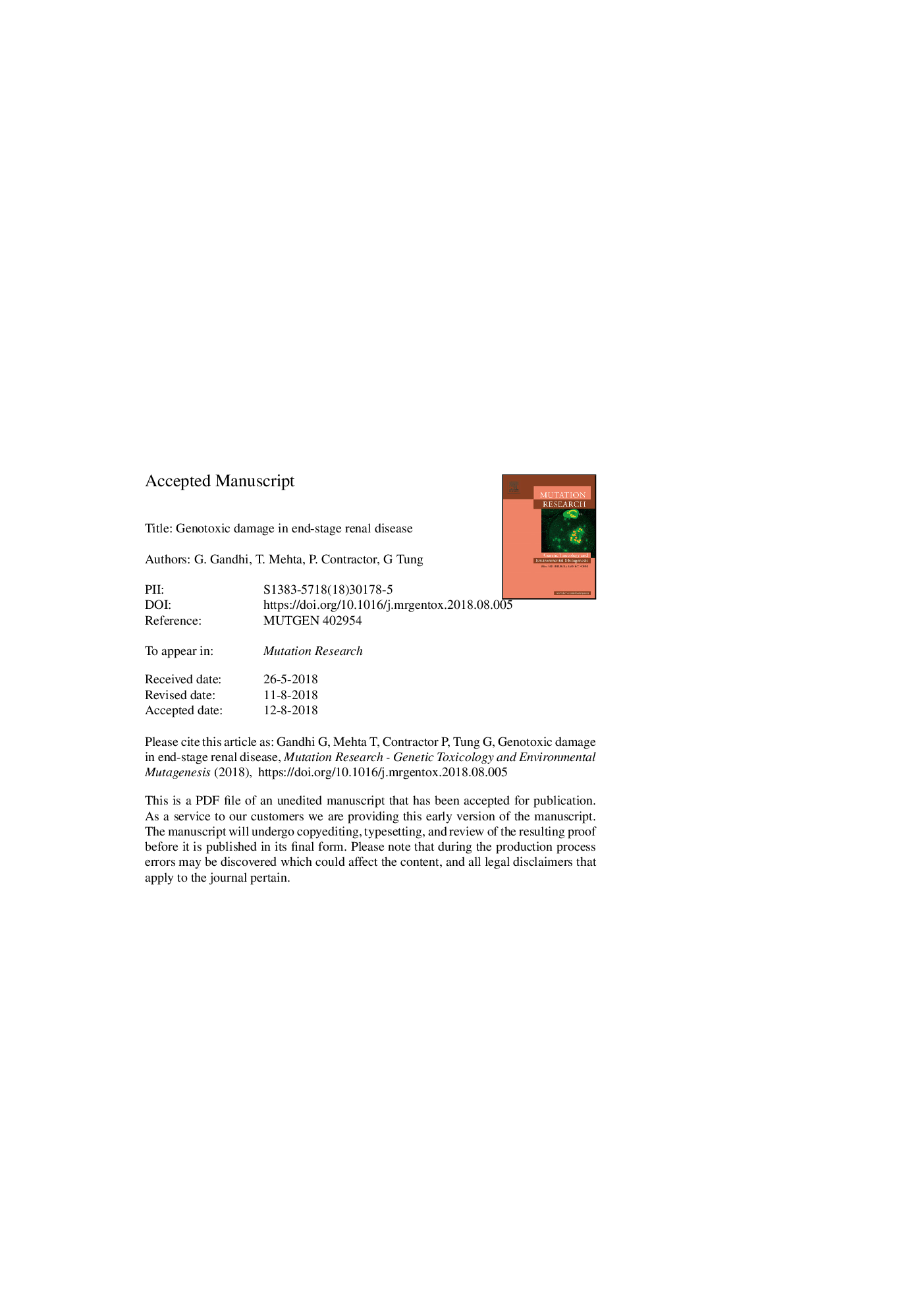| کد مقاله | کد نشریه | سال انتشار | مقاله انگلیسی | نسخه تمام متن |
|---|---|---|---|---|
| 10137195 | 1645724 | 2018 | 33 صفحه PDF | دانلود رایگان |
عنوان انگلیسی مقاله ISI
Genotoxic damage in end-stage renal disease
ترجمه فارسی عنوان
آسیب ژنوتیک در بیماری کلیوی در مرحله پایانی
دانلود مقاله + سفارش ترجمه
دانلود مقاله ISI انگلیسی
رایگان برای ایرانیان
کلمات کلیدی
EGFRESRDlow-melting-point agaroseLMPAOTMROCSRLCASPSCGERRTPBLGFRNMPAAUC - AUCDMSO - DMSOBuccal micronucleus cytome assay - آزمون باکال میکرونوکلئسی سیتومchronic kidney disease - بیماری مزمن کلیویEnd-stage renal disease - بیماری کلیوی در مرحله پایانیrenal replacement therapy - درمان جایگزینی کلیهtail moment - دم لحظه ایDialysis - دیالیزPeritoneal dialysis - دیالیز صفاقیDimethyl sulfoxide - دیمتیل سولفواکسیدComet assay - روش کامت یا روش سنجش ستاره دنبالهدار Body-mass index - شاخص توده بدنBMI - شاخص توده بدنیDamage index - شاخص خسارتOlive tail moment - لحظه دم زیتونperipheral blood leukocytes - لکوسیت های خون محیطیarea under curve - منطقه تحت منحنیestimated glomerular filtration rate - میزان تصفیه گلومرولی برآورد شده استMicronucleus - میکروسکوپCKD - نارسایی مزمن کلیهGlomerular filtration rate - نرخ فیلتراسیون گلومرولیHemodialysis - همودیالیز
موضوعات مرتبط
علوم زیستی و بیوفناوری
بیوشیمی، ژنتیک و زیست شناسی مولکولی
تحقیقات سرطان
چکیده انگلیسی
End-stage renal disease (ESRD) patients are at increased risk for cardiovascular events and cancer, possibly due to genomic instability associated with renal disease and/or its therapy. Prognostic biomarkers of genomic instability may prove useful for initiating appropriate intervention strategies. We conducted a case-control study, performing the single-cell gel electrophoresis assay (circulating leukocytes) and the micronucleus cytome assay (buccal epithelial cells). Cases (ESRD patients; nâ¯=â¯55) were on weekly/fortnightly dialysis therapy and controls (nâ¯=â¯39) were healthy adults. The patients had significantly elevated levels of DNA damage and micronucleated cells. DNA damage showed higher validity and sensitivity than did chromosome damage, for discriminating patients from controls. The patient group showed significant increases in cell proliferation, cytokinetic defects, and cell death, and a decrease in repair index. Correlations were seen between genetic damage and both time-on-medication and time-on-dialysis; between condensed chromatin cells and sex; and between pyknotic cells and dietary pattern. Following stratification by age, gender, and dialysis frequency, significantly elevated DNA damage and MN frequency were seen in the fortnightly dialysis patients, perhaps due to accumulated uremic toxicants. DNA and chromosome damage may be useful prognostic biomarkers for initiating timely interventions against co-morbidities in ESRD patients.
ناشر
Database: Elsevier - ScienceDirect (ساینس دایرکت)
Journal: Mutation Research/Genetic Toxicology and Environmental Mutagenesis - Volume 835, November 2018, Pages 1-10
Journal: Mutation Research/Genetic Toxicology and Environmental Mutagenesis - Volume 835, November 2018, Pages 1-10
نویسندگان
G. Gandhi, T. Mehta, P. Contractor, G. Tung,
